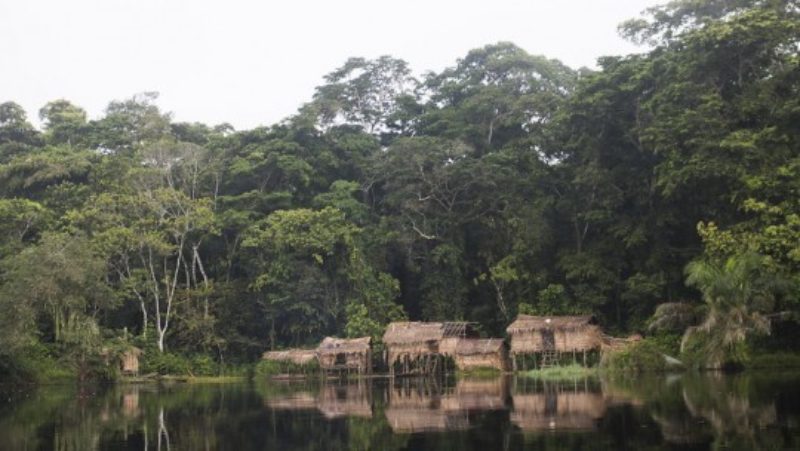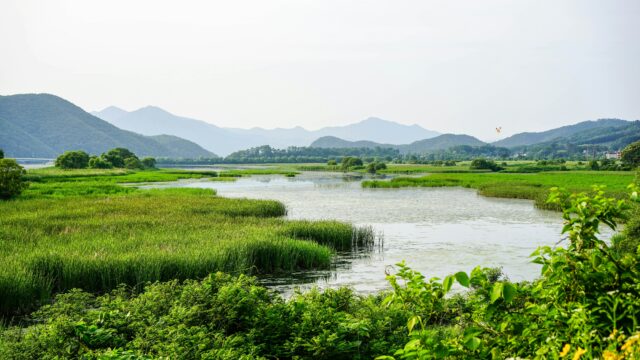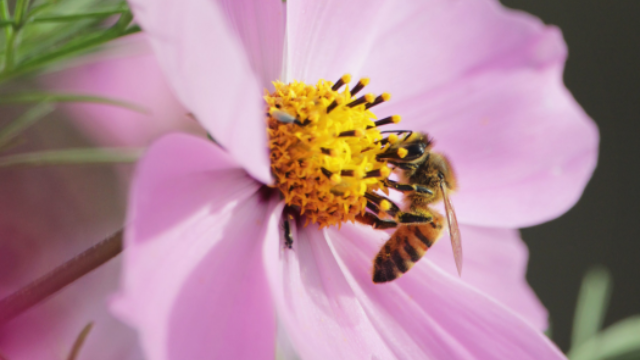30x30 – a brave new dawn or a failure to protect people and nature?
Does the plan to protect 30% of the planet by 2030 offer a false solution to the biodiversity crisis?

This article appears as part of our blog series, co-developed together with IIED's Natural Resources group, Putting social and environmental justice at the core of conservation, climate and development, in which we scrutinise differing approaches to tackling the nature and climate crises through the lens of equality and intersectional justice.
In a landmark judgement on 28 December 2020, five anti-poaching agents from the Salonga National Park in the Democratic Republic of Congo (DRC) were convicted by the Mbandaka military court of the rape and torture of four local women who were fishing on the Iyenge river – the first time in the country ‘eco-guards’ have been found guilty of such a case.
Although the survivors faced many obstacles during the trial and have still yet to receive promised compensation, this was a rare case of justice served for the countless victims of ‘fortress conservation’ around the world – the militarised form of nature protection rooted in the myth perpetuated by many Western-trained conservationists that land prized for charismatic biodiversity is unoccupied wilderness.
Dominant conservation models still failing to safeguard people
The scale of the problem is startling. In just 11 communities out of 700 bordering Salonga – Central Africa’s largest protected area and a UNESCO World Heritage Site – Action pour la promotion et protection des peuples et espèces menacés (APEM)’s local investigators in 2019 found evidence (PDF) of five extrajudicial killings, nine rapes and the torture or physical abuse of at least 63 others.
This followed 2015-16 research by Rainforest Foundation UK (RFUK) and the University of Helsinki into 34 protected areas across the Congo Basin that found human rights violations in at least a half of them, displacement of local people in 26 of them, and almost no evidence of meaningful local consultation in any of them.
Nearly all these protected areas had official development assistance from donor agencies in the global North that supposedly had social safeguards, human rights standards and accountability mechanisms.
It was not until Salonga and other exposés from Africa and Asia appeared in Buzzfeed and other media outlets in 2019 that the conservation sector had to acknowledge the gravity of the problem.
A wave of investigations, inquiries and reviews ensued, leading to some limited improvements in the funding and monitoring of protected areas. More than ever, the language, at least, of international conservation discourse is couched in terms of ‘rights’ and ‘equity’.
“ The 30x30 proposal, heavily pushed by the European Union and other countries in the global North including the UK (with among the highest rates of biodiversity loss), risks entrenching ‘fortress conservation’ and diverting attention from addressing the underlying causes of biodiversity loss.”
Could 30x30 endanger people and nature?
Yet a plan tabled as part of the post-2020 GBF negotiations to double globally protected areas to 30% by 2030 (and possibly up to half of the earth by 2050) threatens to derail the progress that has been made.
The 30x30 proposal, heavily pushed by the European Union and other countries in the global North including the UK (with among the highest rates of biodiversity loss), risks entrenching ‘fortress conservation’ and diverting attention from addressing the underlying causes of biodiversity loss.
First, without much stronger provisions for Indigenous Peoples and local communities (IPLCs), it could lead to more green grabs, human rights violations and food insecurity of those least responsible for the climate and biodiversity crises. Based on a study published in the journal Nature and others, RFUK estimates that 297 million people – or even more − residing on lands with the highest biodiversity value could be impacted.
It is possible that other effective conservation measures, which may include community-based approaches, could provide a more equitable pathway to reaching the 30% goal. However, the concept is still relatively untested and open to interpretation, and simply including it as an option to fulfil the target does not mean it would ever be a significant part of it.
Second, there is a lack of empirical basis behind the claim that declaring 30% of the earth as ‘protected’ will stem biodiversity loss. Any such target should be based on a rigorous assessment of how effective the previous 2020 target of protecting 17% of terrestrial areas and 10% of coastal and marine areas has been.
Third, too much focus on 30x30 fails to address issues around over-consumption and may only serve to shift biodiversity loss elsewhere.
There is also the risk that big business will seek to avoid making necessary changes to business models by making land-based investments in countries where land is cheap and tenure insecure or through purchasing biodiversity or carbon offsets from so-called nature based solutions projects (which could in theory count towards 30x30).
Making people’s voices count
On the eve of the IUCN World Conservation Congress (WCC) in Marseille in September, Survival International, Minority Rights Group, RFUK, APEM and others convened an alternative ‘Our Land, Our Nature’ event to provide a platform on these issues for Indigenous groups and local NGOs sidelined in the virtual post-2020 GBF negotiations.
The event, attended by over 3,000 people in person and online, was a powerful expression of the scale of coercive conservation around the world and of the need to rethink our relationship to the natural world and the role of IPLC in environmental stewardship.
This mirrored calls at the Indigenous Summit of the congress itself for ramping up recognition of their rights and governance of territories, lands, waters and resources.
In practical terms, this could involve the post-2020 GBF and associated national biodiversity plans setting binding targets for recognition of collective land tenure and wealthy countries greatly increasing direct support to proven rights-based approaches (PDF). It would also mean objectively assessing the effectiveness of existing and proposed protected areas and of course dealing with our own over-consumption.
Without addressing this issues, 30x30 could prove to be a false dawn. The forest communities of the Salonga National Park and millions of others in biodiversity-rich landscapes deserve better.
Joe Eisen is executive director at Rainforest Foundation UK; Blaise Mudodosi is coordinator at Action pour la promotion et la protection des peuples et espèces menaces (APEM)
This blog is from a series of blogs, "Putting social and environmental justice at the core of conservation, climate and development"curated by IIED’s Natural Resources research group and the Green Economy Coalition. The series aims to critically analyse trends in the climate and conservation fields, highlighting conservation models controlled and run by Indigenous Peoples and local communities, and identifying examples of good practice in the era of climate justice.
Image credit: Fishing camp on the Lualaka River in DRC's Salonga National Park (Photo: Molly Bergen/WCS, WWF, WRI via Flickr, CC BY-NC-ND 2.0)


